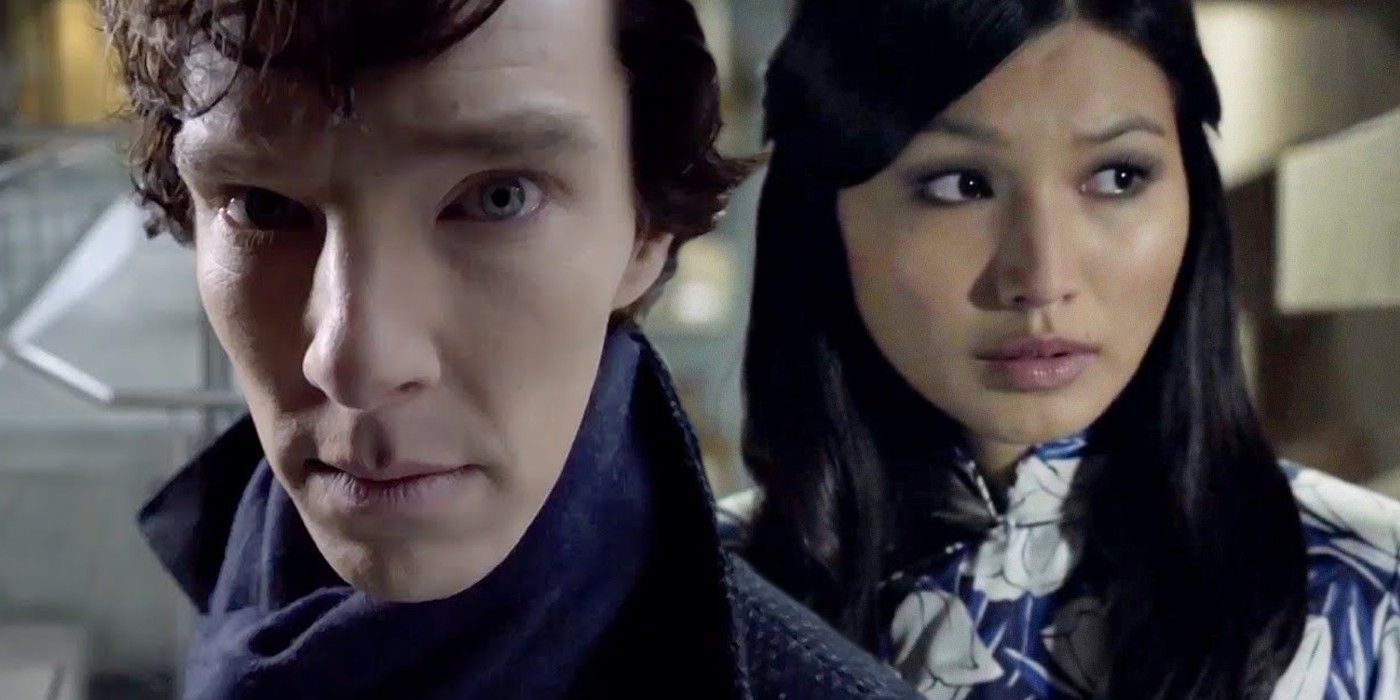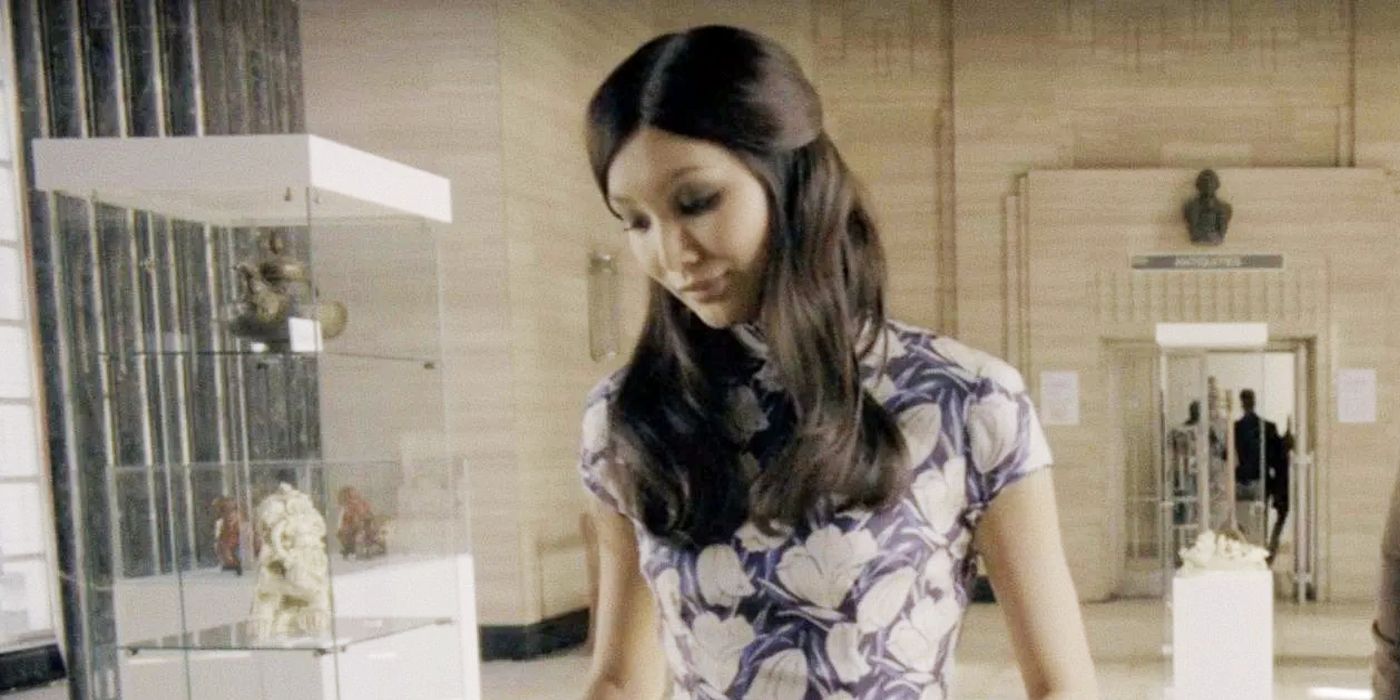Gemma Chan’s Sherlock episode “The Blind Banker” was one of the BBC series’ most controversial and highly criticized episodes. The series, created by Steven Moffat and Mark Gatiss, originally premiered in 2010, starring Benedict Cumberbatch as Sherlock Holmes and Martin Freeman as Dr. John Watson. While Moffat and Gatiss aimed to create a modern adaptation of the beloved detective’s adventures, much of the racism and sexism originally found in Sir Arthur Conan Doyle’s Sherlock stories were abundant in Chan’s episode.
In Sherlock season 1, episode 2 “The Blind Banker,” Chan played a Chinese pottery expert named Soo Lin Yao. Yao worked at the fictional National Antiquities Museum in London, restoring and conducting demonstrations of ancient pottery and artifacts. As Holmes and Watson investigated a series of yellow-paint symbols, it’s revealed that Yao existed at the center of an antique smuggling ring led by Chinese crime syndicate Black Lotus Tong. Yao assisted Holmes and Watson in their investigation before she is killed off-screen by a ninja-like Black Lotus assassin.
With its heavy reliance on stereotypes, Gemma Chan's Sherlock episode became controversial for its harmful depiction of minorities, particularly of Chinese and British-Chinese people. Soo Lin Yao’s first appearance in the episode was in a traditional Chinese dress called a qipao, quietly conducting a tea ceremony in slow motion and speaking with a proverb-like reverence. Scenes of Holmes and Watson investigating London’s Chinatown were accompanied by haunting tones of a clearly Asian-inspired flute, turning regular streets full of Asian shoppers into a mystical and dangerous environment. Yao’s characterization and the misrepresentation of Chinese culture made “The Blind Banker” an altogether tone-deaf episode that fans appropriately spurned online.
Fans were largely critical of how Sherlock’s writers (Gatiss, Moffat, and Steve Thompson) negatively embraced Asian stereotypes with Gemma Chan’s character, Soo Lin Yao. Yao was rooted in a particularly harmful combination of the damsel-in-distress and the “gentle Asian woman” tropes, knocking two stereotypes with a single painful stone. Her apologetic and unassuming manner painted her as submissive, which played into the common trope of the “docile” Asian woman. Even further, the thick accent and lofty tone seem rooted in the misconception of Asians being “exotic” and “mystical,” perpetuating this vision of otherness that made Yao so inscrutable and foreign. It was an objectifying and weak portrayal, made worse by the fact that she was unable to do any harm to Black Lotus without the help of the white male characters in the episode.
“The Blind Banker” writers were also criticized for continuously confusing Japanese and Chinese cultures. The Chinese Black Lotus assassin that attack Holmes and Watson is clearly inspired by Japanese ninja aesthetics and abilities. The origami flower motif also suggests that origami is a Chinese art form rather than a Japanese one, which is a particularly strange inaccuracy given the art-focused theme of the episode. An even more egregious example was the Chinese curio shop Holmes and Watson visited. The shop, named “The Lucky Cat,” greeted the pair with a waving Japanese maneki-neko, the “fortune cat” after which the supposedly Chinese shop is named. The writers essentially amalgamated Japanese and Chinese cultures through these easily resolvable inaccuracies, displaying at best an ignorance of Asian cultures, and at worst a complete disregard for them. And, by grouping them together, the writers perpetuated a historied racist perception of all Asians being the same, diminishing the otherwise rich cultures into a duller, confused mix.
The combination of character tropes with lazy inaccuracies made “The Blind Banker” a hefty Sherlock episode to contend with. The writers failed to make any concerted effort towards meaningful representation, and instead opted for yellow peril-esque tones of mystery that play into dangerous stereotypes. It’s no wonder why the episode elicited such a strong fan response, nor why it remains the most contentious episode in the BBC series.


